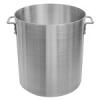This might be limited to a certain number of ppl on here but i wanted to hear your thoughts.
Are ya'll listing any biological hazards for raw materials that are mustard condiments we use in our finished product? Grainy Dijon mustard, Mustard bran, mustard paste, etc>
Previously we had not, but that FDA guidance chart shows some potential pathogens to consider on some mustards condiments we purchase to go in our products. They list E.Coli, Salmonella, and Listeria. I don 't really feel those are legit but I dont' want to leave them out and get hit on it during Prev. Controls audit either.
I wanted to see what ya'll have before I add them to mine. Thoughts?
Thanks everyone

















